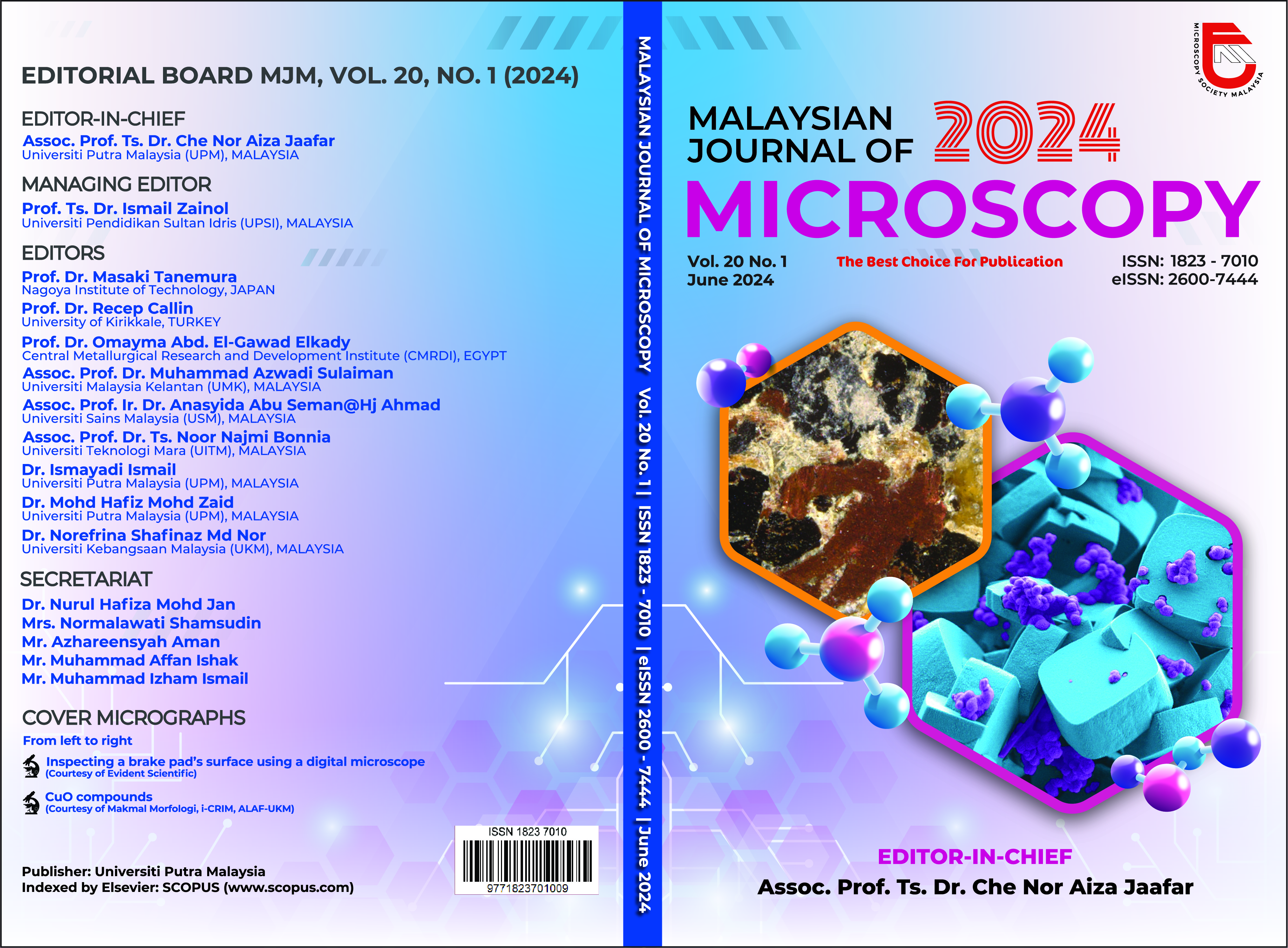THE OCCURRENCE AND MORPHOLOGICAL CHARACTERISTICS OF CYSTICERCUS FASCIOLARIS IN WILD RODENTS FROM PENANG, MALAYSIA
Abstract
Taenia taeniaeformis is a zoonotic tapeworm that causes a reduction in weight, vomiting, malnutrition, and intestinal obstruction to felines and canines. Murid and cricetid rodents are the intermediate hosts, cats and dogs are definitive hosts for this parasite whereas humans are the accidental hosts. These animals may contribute to the transmission of infectious diseases specifically in the urban environment which can be a potential threat to public health. Thus, this study aims to determine the occurrence of T. taeniaeformis in rodents in several selected locations in Penang, Malaysia. Wild rodent sampling activities were conducted from October 2022 until March 2023 using bait traps in Seberang Perai and Penang Island, Malaysia. The wild rodents were then dissected, and the livers were examined for the presence of cysts. The extracted parasites were examined in detail under the stereomicroscope and scanning electron microscope (SEM). The SEM images show detailed morphological characteristics of T. taeniaeformis (Cysticercus fasciolaris) at the larval stage. The larvae were found in 44 out of 146 wild rodents (30.1%). Rattus rattus was found to have the highest infection rate (11/20; 55%), while Rattus norvegicus had the lowest rate (18/86; 20.9%). This study provided a reliable reference for the parasite C. fasciolaris, with distinctive morphological characteristics. The study concluded that development in urban areas of Penang may influence the prevalence of T. taeniaeformis in both definitive and intermediate hosts by altering both hosts’ behaviour, and habitat. With a high prevalence of C. fasciolaris among rodents, this parasite poses increased zoonotic potential to the public.


